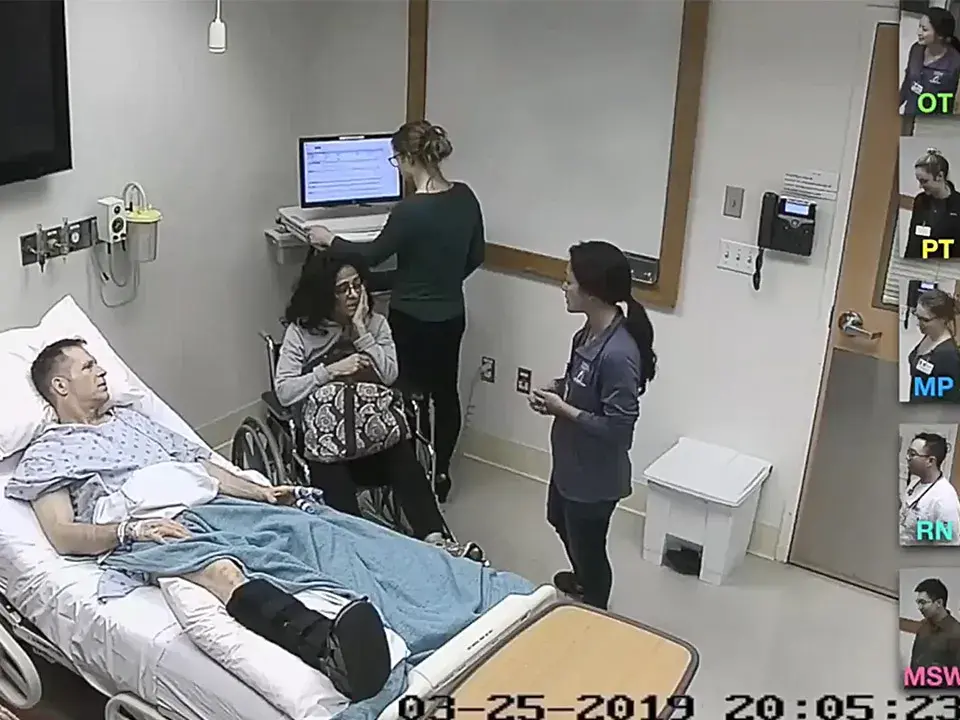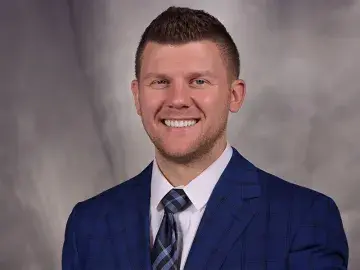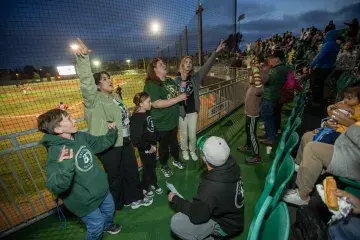Real-to-Life: Emergency Room Simulations Shift Online

It’s 8 p.m. and Howard is despondent. Earlier in the day, he was hit by a scooter on the streets of Oakland. He’s being treated at a local hospital for a fractured ankle and burning pain in his hand. His injuries have left him unable to assist his wife, who’s been by his side throughout the ordeal, and who is wheelchair-bound due to multiple sclerosis. Now, a physician assistant has informed him that she needs to discharge him to make room for other emergency patients. And to top things off, Howard and his wife are homeless and have nowhere to go.
“This is a healthcare facility—you’re supposed to be helping people and taking care of us. I don’t feel like I’m being taken care of when I’m being shoved out the door and I can’t walk,” Howard says angrily, looking around at the care team that has gathered to treat him. “You mentioned something about crutches—how can I do crutches with my hand in this fractured state? This doesn’t make any sense!”
Howard, you might be surprised to learn, is a character played by an actor in a fictional simulation scenario—and it’s up to healthcare and social services students from Samuel Merritt University and Bay Area partner schools to act as a cohesive unit, rather than individual specialists, and assist him. What’s more, this is all being doing virtually.
Nervous butterflies before the simulation
With the COVID-19 pandemic, SMU quickly shifted classes and simulations online—including this one about Interprofessional Patient Safety and Communication, in which students from various healthcare disciplines—podiatrists, nurses, physician assistants, occupational therapists, physical therapists, and more—interact with actor-patients in elaborate scenarios. The students must assess the patient and create a plan to deliver the appropriate care.
But it’s not easy. Howard and his wife are frustrated at their situation. The actors are trained to challenge students and advocate for themselves, much like real patients might.
“It was a little bit nerve-wracking at first, and I had to kind of gather my thoughts while my other colleagues were talking,” says Jordan Patterson, DPT ’22, a student in SMU’s Doctor in Physical Therapy program. “The patients were pushing back, and it was challenging. Then I had to remember that this is their health, and people do react this way.”
Pre-pandemic, the simulations took place in labs set up to look and feel like hospital rooms. Although now online, student feedback has been positive, with some noting how nervous they get and how real the simulations feel.
Interprofessional care education
Another innovative aspect of the simulation is its focus on interprofessional or cross-discipline training rather than on procedure or protocol.
“This is really about how students can assess, problem solve, work together, and communicate as a team,” says nursing professor Teresa Gwin, who was involved in developing the scenario. “We know that miscommunication can be deadly, and we know it can lead to mixed messages to patients which can frustrate them and make them feel we don’t know what we’re doing.”
On the day of the simulation, the students enter a virtual conference call in which an instructor outlines the scenario. About four students from the class of eight to 12 work with the patients while the others observe.
During the 15-minute simulation, things get hectic. There is a nursing student, a podiatry student, a physical therapy student, and a social worker who have all just met and are trying to work together to address the patients’ needs.
The students must walk a fine line between following their instructions and giving the patient the best care. When Howard expresses concern that he doesn’t know how to use “crutches,” Patterson, the physical therapy student, gently corrects him.
“I’m suggesting that I take you through the proper training to use this cane,” Patterson tells Howard. “I will assess and test your strength. If I deem that you’re not safe, then I won’t feel comfortable discharging you.”
Patterson’s comment calms Howard–and then, in a matter of minutes, time is up and the scenario is over.
Mistakes are made, this is the place to make them
Afterward, the students and faculty have a 30-minute debrief about how the simulation went.
“It's not about pointing out what they did wrong or right,” says Gwin. “It's about having them figure out what they need to improve. This is really all about learning—mistakes are made and this is the place to make them and you learn from your mistakes.”
The actors also have a chance to express how they felt the scenario went.
“I thought everybody was trying to empathize with what I was trying to deal with,” says Ed Pieznicik, the actor who played Howard. “I also felt you all had a unified message—even though I didn’t like your message. I didn’t want to be discharged.”
He praised Patterson for expressing concern for his safety.
“That was very helpful in this situation, that somehow he was going to try and work with me and assess my strength, and if there was a real concern for my safety alternative plans might be made. That allowed me to maybe consider what you were saying.”
Lillian Khan, ELMSN ’22, who is in the Entry-Level Master of Science in Nursing program with an accelerated RN portion, has participated in three different in-person and virtual simulations so far. Each one teaches her something new.
“I learned it's really important to organize yourself and the team prior to seeing the patient, and bullet point out how you want to treat and what you want to communicate with the patient,” she says.
Though her team came up with a plan before meeting Howard, they didn’t communicate it with him and just jumped into trying to treat him.
“The patient didn’t know what to expect,” she says. “We should have set the stage.”
Khan says she’s already putting her experience from the course into practice in her clinical student rotations at Alta Bates Summit Medical Center.
“During the simulation, I gained respect for other team members like therapists and social workers. I learned what their scope of practice is,” she says. “In the hospital, everyone is in their own bubble. But now I make an effort to get to know my peers outside of my practice. It’s important for all of us to communicate.”


